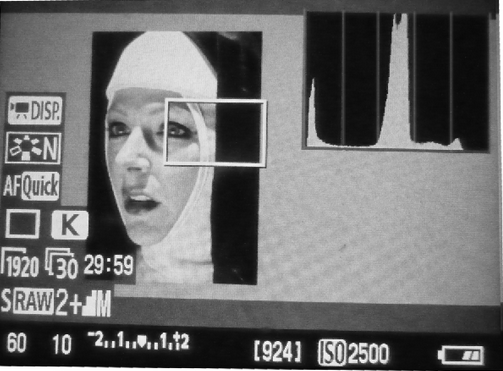Eric Schmidt, DP Visits The Association’s Canon Camera Classes
If you are coming f rom a film background, chances are that you are very attached to your light meter and perhaps have backups upon backups. In the DSLR world, DPs have been familiarizing themselves with the histogram in the camera to measure the accuracy of their exposure and the balance of the blacks, greys, and whites in the picture. What they are aiming to do is avoid blowing out the highlights in the picture where information would be irretrievable in post-production.
rom a film background, chances are that you are very attached to your light meter and perhaps have backups upon backups. In the DSLR world, DPs have been familiarizing themselves with the histogram in the camera to measure the accuracy of their exposure and the balance of the blacks, greys, and whites in the picture. What they are aiming to do is avoid blowing out the highlights in the picture where information would be irretrievable in post-production.
When looking at your histogram, the white spikes on the right side should never be slammed against the edge. This ensures that the detail in the whites will be retained and leave you more to work with down the line. Because once it’s gone, it’s gone.
Many seasoned DPs may have trouble letting go of the trusty sidekick they’ve had with them their whole career. It can be difficult to transition from a light meter to an in-camera tool to judge your picture. Now you’re expected to trust a digital graph to tell you how your exposure is? Eric Schmidt, Director of Photography of films, music videos, and commercials (surely, you’ve seen the Dos Equis ad), had to learn to trust the histogram while filming a feature film on the 5D Mark II with Mark Pellington. In “I Melt With You“, the shots are 100% Canon HDLSR footage and the exposure was judged by a histogram.

Above is an example of a properly exposed histogram where the spikes depicting the whites are not up against the wall of the histogram, therefore retaining detail. The grey spikes in the middle depict the skin tone of the actress. The black spikes are up against the left wall and therefore “crushed”, yet they manage to still retain some detail on the fabric.
During his visit to the Canon Boot Camp, Eric talks about his fears of the histogram and how he came to embrace it.
